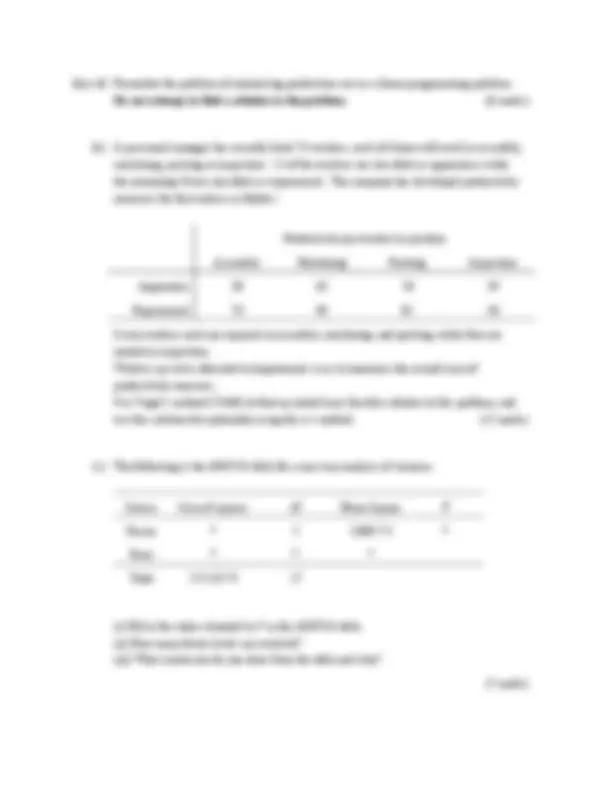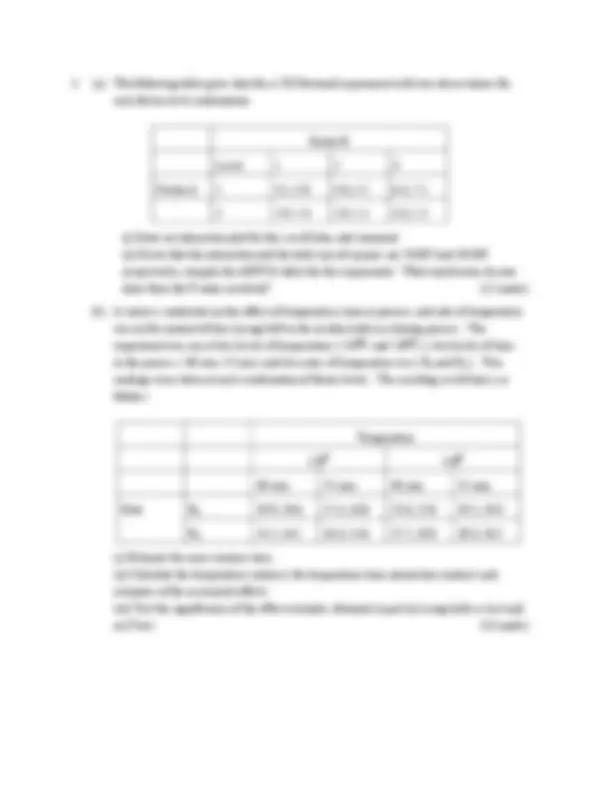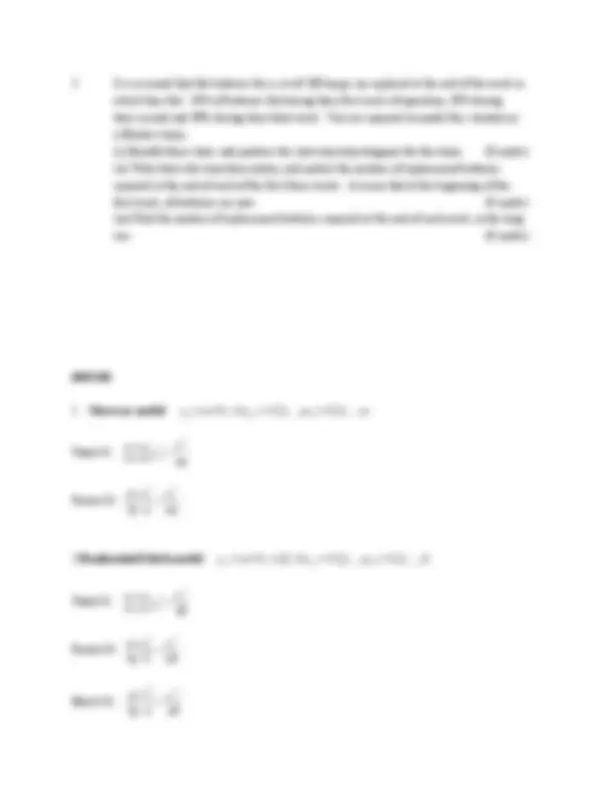





Study with the several resources on Docsity

Earn points by helping other students or get them with a premium plan


Prepare for your exams
Study with the several resources on Docsity

Earn points to download
Earn points by helping other students or get them with a premium plan
Community
Ask the community for help and clear up your study doubts
Discover the best universities in your country according to Docsity users
Free resources
Download our free guides on studying techniques, anxiety management strategies, and thesis advice from Docsity tutors
Main points of this past exam are: Dual Simplex Procedure, Simplex Method, Following, Problem, Maximise, Dual Simplex Procedure, Two-Phase Method, Dual, Complementary Slackness, Slackness Theorem
Typology: Exams
1 / 6

This page cannot be seen from the preview
Don't miss anything!




Instructions: Answer FOUR questions. All questions carry equal marks. Statistical tables are available.
Examiners: Mr. D. O’Hare Prof. M. Gilchrist Mr. P Clarke
Maximise subject to
z x x x x x x x x
1 2 1 2 1 2 1 ,^2.
(10 marks)
(b) (i) Use either the dual simplex procedure or the two-phase method to find the solution to the following problem, if it exists: 1 2 1 2 1 2 1 2
Minimise 2 5 subject to 2x 4 3 6 , 0.
z x x x x x x x
(ii) Write down the dual of the problem in part (i), and deduce its solution from the final table above. Give two illustrations of the complementary slackness theorem as it applies in this example. (15 marks)
maximise 3 7 2 subject to 100 3 200 , , 0.
z x x x x x x x x x x x x
Basis z x 1 x 2 x 3 S 1 S 2 Solution x 1 3/2 -1/ x 2 -1/2 1/
(i) Using the techniques of sensitivity analysis , fill in the missing entries in the table and state clearly the solution to the problem. (6 marks) (ii) Within what limits should the objective function coefficient of (^) x 2 lie in order that the current basis remains optimal? What changes in basis will occur if the coefficient lies outside this interval? (5 marks) (iii) What are the shadow prices of the two constraints here, and what do these values mean? (2 marks) (iv) If a new constraint, x 1 (^) + x 2 (^) + x 3 ≤ 90 , is added to the problem, is the current basis still feasible? If not, find a new basis that is both feasible and optimal. (6 marks) (v) A fourth variable, x (^) 4 , is introduced so that the problem now reads: 1 2 3 4 1 2 3 4 1 2 3 4 1 2 3
maximise 3 7 5 6 subject to 100 3 2 200 , , 0.
z x x x x x x x x x x x x x x x
Find the solution to the revised problem. (6 marks)
Boiling point 60 99 15 30 Hardening time(h) 1 4 3 2 % plastic 80 50 2 14 % acid 20 0 0 10 Cost( €/litre ) 3.0 7.5 4.5 2.
Factor B Level 1 2 3 Factor A 1 3.1, 4.0 4.6, 4.2 6.4, 7. 2 5.9, 5.3 2.9, 2.2 3.3, 2. (i) Draw an interaction plot for this set of data, and comment. (ii) Given that the interaction and the total sum of squares are 18.007 and 28. respectively, compile the ANOVA table for this experiment. What conclusions do you draw from the F-ratios involved? (12 marks) (b) A study is conducted on the effect of temperature, time in process, and rate of temperature rise on the amount of dye (in mg) left in the residue bath in a dyeing process. The experiment was run at two levels of temperature ( 120^0 C and 140 0 C ), two levels of time in the process ( 40 min, 55 min ) and two rates of temperature rise ( R 1 and R 2 ). Two readings were taken at each combination of factor levels. The resulting set of data is as follows:
Temperature 120 0 140 0 40 min 55 min 40 min 55 min Rate R 1 19.9, 18.6 17.4, 16.8 25.0, 22.8 19.5, 18. R 2 14.5, 16.1 16.3, 14.6 27.7, 18.0 28.3, 26. (i) Estimate the error variance here. (ii) Calculate the temperature contrast, the temperature-time interaction contrast, and estimates of the associated effects. (iii) Test the significance of the effect estimates obtained in part (ii) using both a t- test and an F-test. (13 marks)
an
y y ij
Factor SS: an
y n
a y i
i^2 1
=
ab y y ij
Factor SS: ab
y b
a y i
i^2 1
=
Block SS: ab
y a
b y j
j^2 1
.^2
=